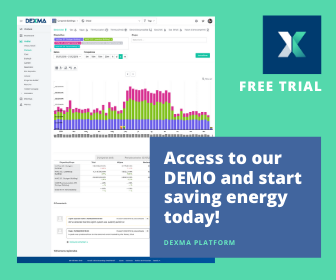Whether you are considering investing in an EMS or you already have a solution in place to save energy costs in your business, make sure you take into account all the available options, research as much as you need to and find the customised software that works best for you. Using an Energy Management Software is simple, but you need to keep these 5 ideas in mind:
1. Monitoring systems lead to efficiency: Energy Management Software
Companies know how important is to efficiently manage energy resources. Lighting equipment, HVAC systems and other types of electronic devices like computers and phones…we rely completely on energy to keep our business running. A recent study developed by Gas Natural Fenosa pointed out that small and medium sized Spanish businesses could save up to €4.452 million and cut their utility bills by 26%, just by changing specific habits and behaviours and implement appropriate initiatives.
- Regarding HVAC systems (heating, ventilating and air conditioning), choose equipment with Inverter technology (the most energy efficient).
- In terms of lighting, taking advantage of natural light is always a good idea. Also, low energy light bulbs or LEDs are efficient alternatives.
- As regards electronic devices, don’t leave them turned on when you are not using them, unplug them so they don’t remain on ‘stand-by’.
Besides all these measures to consider, monitoring is essential. To better manage your facilities and precisely control the maintenance expenditures, it is critical to analyse in depth the performance and the expense of the facility. How can you monitor, analyse and keep track of your energy consumption and costs? With an Energy Management Software. This will take you to efficiency and savings.
A tip you will find useful at the end of the day is to seek for measurement and verification. A monitoring system will measure your performance, what can you improve, and will provide you with reports that everybody can understand.
2. How you pay for it matters
Whether you are considering one energy efficiency project or another, you need to think about how will you pay for it. There are different financial programmes in the EU to support and incentivise “greening” European buildings and improving their energy performance. Grants and funds, preferential loans and third party financing from energy service companies are some of those programmes. Audits are also a useful tool to measure your performance and get advice on where to invest. Read more on how to finance your energy efficiency project here.
3. Institutional and administrative barriers
There are a variety of regulatory and planning obstacles that you will have to be aware of in managing your company’s energy. One of the policies you need to take into account is the European Energy Efficiency Directive. What does that have to do with an Energy Management Software? Well, if you invest in software, it will help you towards compliance with the Directive. Having real, accurate information about your energy consumption, measured over a period of time, will help you perform energy audits successfully.
Meanwhile, another challenge that won’t fade away in a short-term is ISO 50001 Certification. This standard is a specification for an energy management system that defines requirements for establishing, implementing, maintaining and improving such a system. How can you achieve ISO 50001 certification? Establish objectives, monitor and collect energy data for a further analysis, educate your organisation, look for financial aids who adopt ISO 50001, seek out internal resources, look for a consultant that will help you comply and practice energy efficiency.
4. Awareness of your energy savings potential
In general, there is a lack of understanding of the energy, cost and carbon savings from different energy efficiency measures. Energy saving is seen as something “good”, that’s all. People are not aware of the greater savings rather than helping the planet with old-fashioned techniques. To be ready to set up an energy efficiency project using an EMS, you first have to understand your energy savings potential.
Prioritising the measure with lowest upfront cost is not necessarily the right choice. You need to separate and balance your possible expenditures and savings that each measure will entail. Finally, consider the return on investment of each solution, to work out which one is best value overall.
Questions like ‘how much can I save?’ or ‘what can I improve?’ are examples of what you should be asking yourself, and your energy management solution provider (see more questions you should be asking).
5. What do you want to measure?
The last but not least point is to think of the dimensions of my facilities. What do I want to monitor exactly: is it just one building? Is it a set of facilities spread over a territory? Depending on what the answer might be, a project will be more or less suitable for you.
Now you are in the right mindset to look for your Energy Management Software. But remember, information is key, so try out different solutions and make an informed decision, using these 5 considerations.




